
|
2nd Grappa Tourney
|
|
Theme |
There were 41 problems to judge; the average level was satisfactory and the top problems are very good. |
We are aware that the thematic requirement is a formal one, yet this has been chosen on purpose to allow inventive composers to add strategic play. Therefore, problems showing artistic and interesting motives have been ranked higher than those with the formal theme only. |
Some problems were downgraded for constructional weaknesses or lack of homogeneity; there were three not thematic problems. We are very sorry that an outstanding problem by Fadil Abdurahmanović and Mike Prcic, which would surely win the tourney, is unfortunately anticipated by Unto Heinonen, Springaren 1996. |
|
Menachem Witztum 1 Pr Grappa Ty Halkidiki 2004 |
Dieter Müller Jean Haymann 2 Pr Grappa Ty Halkidiki 2004 |
Michael McDowell 3 Pr Grappa Ty Halkidiki 2004 |
||||||
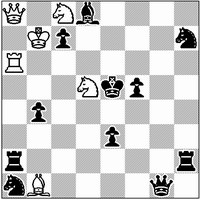 |
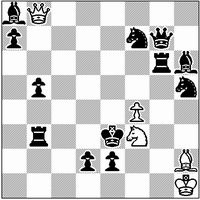 |
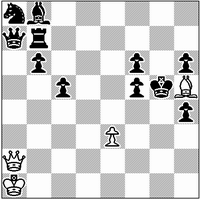 |
||||||
H#2 |
2111 |
(6+11) |
H#2 |
2111 |
(5+12) |
H#2 |
2111 |
(4+11) |
|
1st Prize: Menachem Witztum (Israel) 2nd Prize: Dieter Müller (Germany) & Jean Haymann (Israel) 3rd Prize: Michael McDowell (Great Britain) |
|
Emil Klemanič 1 HM Grappa Ty Halkidiki 2004 |
A. & V. Semenenko 2 HM Grappa Ty Halkidiki 2004 |
Josef Kupper 3 HM Grappa Ty Halkidiki 2004 |
||||||
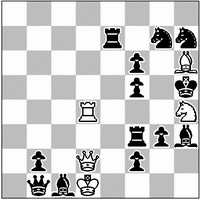 |
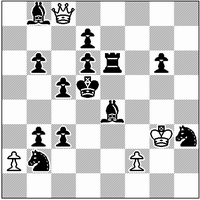 |
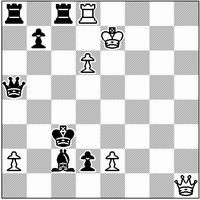 |
||||||
H#2 |
2111 |
(5+13) |
H#2 |
4111 |
(4+13) |
H#2 |
b) wLd8 |
(6+7) |
|
1st Honourable Mention: Emil Klemanič (Slovakia) 2nd Honourable Mention: Aleksandr & Valery Semenenko (Ukraine) 3rd Honourable Mention: Josef Kupper (Switzerland) |
| Dieter Müller 4 HM Grappa Ty Halkidiki 2004 |
Mark Erenburg Menachem Witztum 5 HM Grappa Ty Halkidiki 2004 |
||||||||
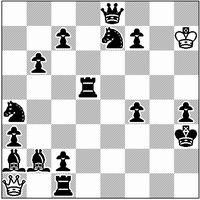 |
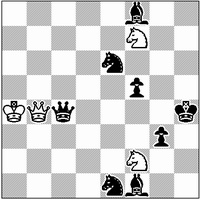 |
||||||||
H#2 |
b) bKa6
c) bKh5 d) bKc8 |
(2+15) |
H#2 |
2111 |
(4+8) |
||||
|
4th Honourable Mention: Dieter Müller (Germany) 5th Honourable Mention: Mark Erenburg & Menachem Witztum (Israel) |
|
Dieter Müller 1 Comm Grappa Ty Halkidiki 2004 |
Valery Gurov 2 Comm Grappa Ty Halkidiki 2004 |
Zvonimir Hernitz 3 Comm Grappa Ty Halkidiki 2004 |
||||||
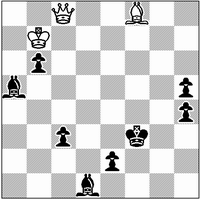 |
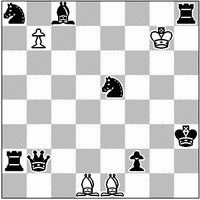 |
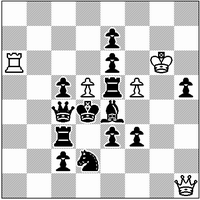 |
||||||
H#2 |
4111 |
(3+8) |
H#2 |
2111 |
(4+8) |
H#2 |
2111 b) pc2=>f4 |
(5+13) |
|
1st Commendation: Dieter Müller (Germany) 2nd Commendation: Valery Gurov (Russia) 3rd Commendation: Zvonimir Hernitz (Croatia) |
|
Klemen Šivic 4 Comm Grappa Ty Halkidiki 2004 |
Colin Sydenham 5 Comm Grappa Ty Halkidiki 2004 |
Stefan Parzuch 6 Comm Grappa Ty Halkidiki 2004 |
||||||
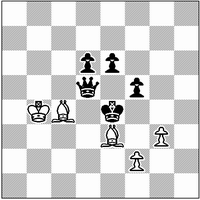 |
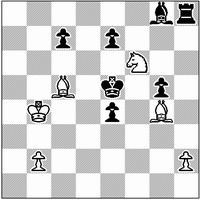 |
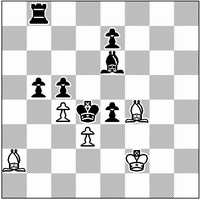 |
||||||
H#2 |
3111 |
(5+5) |
H#2 |
2111 Duplex |
(6+7) |
H#2 |
2111 |
(5+7) |
|
4th Commendation: Klemen Šivic (Slovenia) 5th Commendation: Colin Sydenham (Great Britain) 6th Commendation: Stefan Parzuch (Poland) |